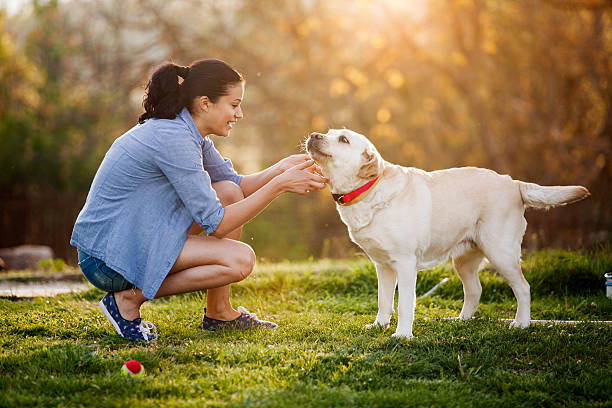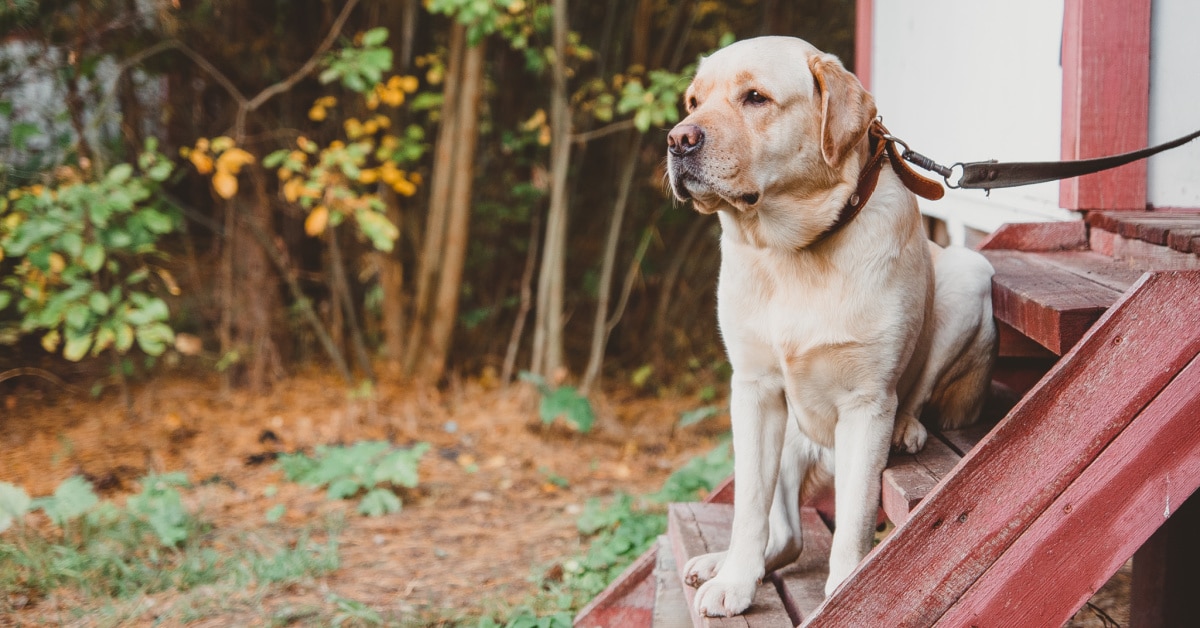
Adopting a rescue Lab can, in many ways, be very different from getting a Labrador puppy from a breeder or from a friend.
The experience will be challenging at times but will mostly be gratifying. Because you know you have helped a dog get a second chance at a home.
For this article, we will be discussing what you should do when you get a rescue Lab. How you can make their transition into your home as smooth as possible.
You may need to make a lot of adjustments in the beginning. But it will make a lot of difference if you prepare.
Should I get a rescue Labrador?
Before we get into all the details of preparing for a rescue Lab. You should ask yourself if you’re ready to give a rescue Labrador a new home.
There can be benefits to adopting a rescue Lab from the shelter, but there can also be challenges that arise.
First off, you have to make sure that you can set aside the time. In the first few weeks or so of getting a Lab to care for their needs.
A rescue Labrador most likely has a history of mistreatment from their previous owners. It will take time to make them feel comfortable in your home.
Next, you have to ensure that you can afford the costs of homing a Labrador.
You do not want to adopt a rescue Lab. Only for them to get a similar treatment in your home due to financial constraints.
Make yourself aware of the costs involved when taking care of a Lab so you can adjust accordingly.
Some rescue Labs will also have present medical conditions that you may need to factor in when trying to determine the costs of adopting.
Not all Labs will have medical issues. But it is worth noting just to be on the safe side of things.
Once you think that you are ready to care for them in all capacities. Then adopting a rescue Lab is a great idea!
You will gain an excellent furry friend for the next years. You will also be helping them become more comfortable and give them a good quality of life.
Adopting is almost always a really good choice due to the influx of Labradors being abandoned by their owners.
As a very popular breed, there is also an increased likelihood. That a Labrador will end up in a rescue centre due to their owners not being able to provide for them any longer.
If you are within the capacity to do so, then you definitely should adopt a Lab.
They’re great pets and you’ll have the best of times with them for a long time.
Things you may need to prepare for in Labrador Retriever rescue
It’s previously mentioned that you’ll need to prepare for a lot of things when adopting a rescue Lab.
Here is a list of things that you are likely to encounter when you are preparing your home for a rescued Labrador.
1) Your rescue Lab may not be house trained.
In all likelihood, there’s a good chance that you will adopt a Labrador that is already house trained and you won’t need to worry much about housebreaking them.
But you should not assume that they are and the basic presumption should be that you will need to train them when you bring your rescue Lab home.
To prepare for that, you need to get ready for any materials that you may need for housebreaking. For example, you may need a crate for your Labrador.
That is if they do not have any trauma with crates and seem comfortable with being crated.
It is also possible that your rescue Lab is already crate trained, which is a good thing for you.
That way, you’ll have a head start in house training them and you’ll have fewer issues in doing so.
It’s best to keep cleaning solutions and tools on hand by the time your rescue Lab arrives home.
While housebreaking them, you could run into accidents, so it’s best to prepare at all times.
2) Your rescue Lab will need a lot of care and attention in the beginning.
Your Lab may have deprived of emotional security in their previous years.
As their new caretaker, you will need to set aside some time (especially in the beginning) to spend time with them and build their trust in you.
It’s a good idea to take your rescue Lab home during a time when you are not too busy with work or other engagements.
That way, you will be able to commit more time to caring for your Lab and making them feel welcome inside your home.
3) Look into your rescue Lab’s previous routines.
Sticking to the same routines that your new Lab used to before will help facilitate an easy transition into your home.
It will be very helpful if you look into their previous routine and try to replicate it as much as possible when they move into your home.
This means finding out what time they usually go out for walks and looking into what time they usually eat their food during the day.
This way, you will know if you can make adjustments to your schedule during the initial transition period.
Over time, you’ll start to build your own routines with your Lab. But trying to ease them into new routines as opposed to jumping straight into something new will have better results for both you and your Labrador.
In line with this, you should also feed the same food your Labrador has been eating in the shelter. Consult with the shelter about what brand and kind of food they have been eating there during their stay.
Switching foods immediately for Labradors is not a good idea and if you do want to change brands or type, you have to do it slowly over time.
4) You will need to exercise caution in handling your Labrador in the beginning.
You should keep in mind that your rescue Lab is a stranger to you, and you are a stranger to them.
Full-grown Labradors are not like puppies that are quite easy to manage. You will need to be cautious in handling them to avoid any accidents.
While your Labrador does not know you yet. They may feel threatened in certain situations or may act aggressively in some.
This does not mean that your rescue Lab is bad or you did not choose the right one for you. You just need to take time to get to know them and build their trust in you.
You should avoid excessive touching them especially cuddling or hugging them. They may not accustomed to this level of attention from you yet and could find it threatening. Then they may act aggressively due to the feeling of being threatened.
Avoid bothering your Lab when they are eating during mealtimes since they might act negatively when provoked this way.
You should also avoid engaging in rough play that could provoke them or cause them to act aggressively against you.
What you need to buy Labrador Retriever rescue?
For the most part, what you need to buy to prepare for your rescue Lab is the same as what you would buy if you brought home a new Lab puppy, with slight differences due to age and maturity.
Here is a list of possible things you need to buy:
1) Harness/leash
Like all other adult Labs, your rescue Lab will need a lot of exercises especially if they are still on the younger end of their years.
This means that you’ll need to go out on a lot of walks.
If you don’t have a lot of space for exercise such as a backyard, you will need to go out into public spaces.
Since you’re not yet fully acquainted with your Labrador yet, you are still not sure how they are most likely to act in public.
You won’t have control of them yet and you’ll need some form of a line to attach to them.
A harness is much better in this case for the same reason that you are still not sure how they will act when in public.
A leash could be painful if you are still not aware of how your Lab will react to external stimuli.
In this study of dogs that leashed. The dogs who had leashes on were less likely to interact with others on the walk.
While interaction can be very good for your Lab, you’ll want some time to adjust to them before you feel comfortable with them interacting with others for the time being.
2) Crate
As previously stated, a crate is incredibly helpful in potty training and housebreaking.
Potty training adult dogs can be difficult but it is by no means impossible.
Still, you’ll want to have as much assistance as you can and a crate is a good way to do that.
A crate can also double as their sleeping area with some beddings.
A crate can serve many purposes including the ease of travel if ever you need to go somewhere with your Lab.
3) Cleaning tools
Potty training is a process that could have accidents in between.
Getting cleaning tools ready at home will help you deal with these mishaps much better.
Get towels, rags, and the appropriate cleaning solutions and stock up on them at home.






